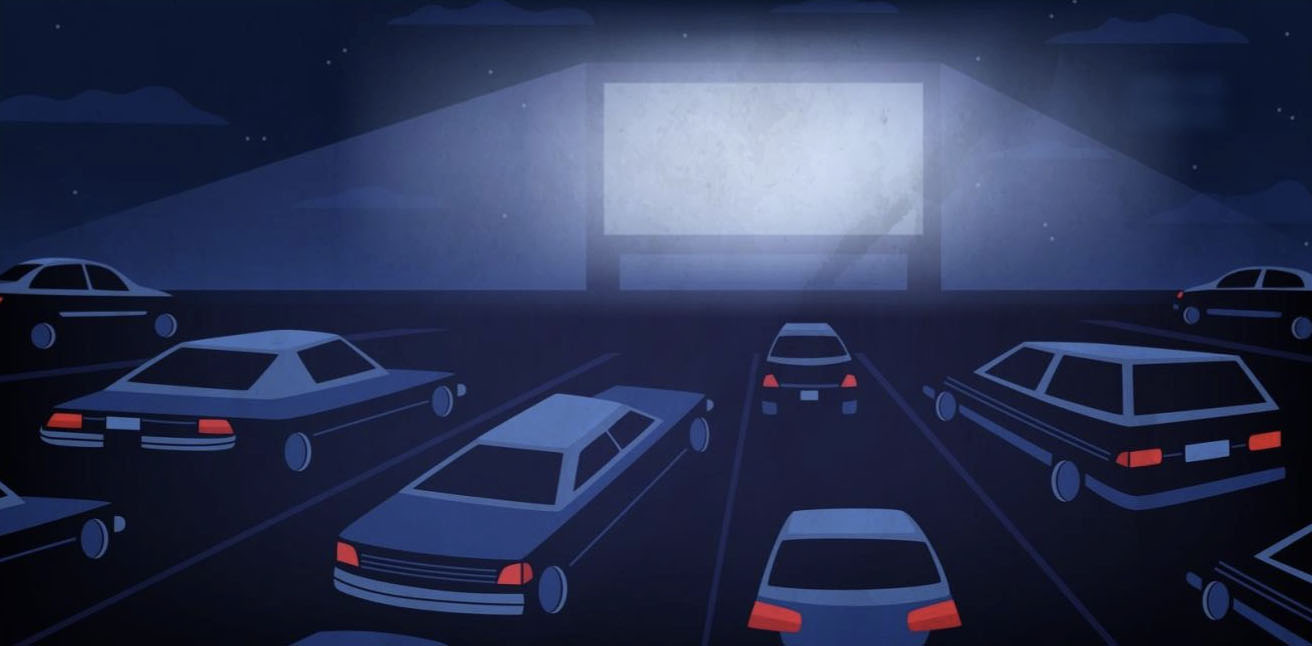Why Movie Fans Are Interested In Outdoor Cinema History
Several decades ago, outdoor cinemas “drive-in theaters” were the go-to place for movie fans throughout the United States. Today, only a few outdoor theaters are still in operation, forcing fans to turn to land-based theaters. Berlin, Germany is home to the first outdoor cinema. Founders opened its first outdoor cinema in 1916. The popularity of the outdoor cinemas soared, prompting “rooftop theater” owners to follow in suit. By 1920, rooftop theaters were becoming a thing of the past, as they were being transitioned to outdoor cinemas.

One of the most popular outdoor cinemas was located in Times Square in the Big Apple. “Loew’s New York” was packed with anticipated fans of all ages. Fans gathered in front of the big screen, sitting on blankets and chairs. According to rumors, celebrities oftentimes appeared at Loew’s New York when Hollywood premieres were scheduled to air. Tickets were free on most evenings, with the exception of a few fundraising events.
Part Of History
There is no doubt, outdoor cinemas played a major role in the international film industry. Even amateurs got joined the outdoor cinema movement. Amateur groups, investing in cost-efficient movie projectors, operated outdoor cinemas, guerrilla-style, in local parks, vacant parking lots, and other outdoor public areas. In attendance, movie fans from all walks of life.
Unlike traditional outdoor cinemas, outdoor guerrilla-style cinemas were assembled before dusk and disassembled a few hours later each night. When conventional electricity was not available, the amateur groups turned to portable generators and car batteries.
In 2015, approximately 90 outdoor guerrilla-style theaters were still in operation in Athens, Greece. Ninety is a significant drop from the 600 outdoor cinemas that were in operation in the 60s.
Many describe the trend of outdoor theaters as being similar to online slots, both of which offer hours of entertainment.
Theatre de Guadalupe
The popularity of outdoor cinemas spread extremely quickly across the world. Once the news had reached New Mexico, investors were preparing to open up what would be one of the largest of its kind. On April 23, 1915, the Theatre de Guadalupe opened in Las Cruces, New Mexico. As one of the largest of its kind, Theatre de Guadalupe would comfortably seat up to 700 attendees and at least 40 vehicles.
Unlike most drive-in cinemas, Theatre de Guadalupe was described as a “partial” outdoor theater, as it provided space for vehicles and individuals. The premiere was a movie called “Bags of Gold.”
Theatre de Guadalupe would later be renamed “De Lux Theater.”
No Holds Barred
Modern land-based cinemas have definitely changed the way fans watch movies. The atmosphere is entirely different than that of outdoor cinemas. Some describe the modern theater environment as being a bit “stuffy,” compared to outdoor cinemas. Moviegoers are expected to be on their best behavior, generating as little noise as possible. The same cannot be said about the outdoor theater environment. Fans gathered in groups in front of the outdoor cinema screen, chatting about their past experiences, celebrities, and other topics.
Most land-based cinemas have limited space, with rows of chairs lined on the right and left sides and an aisle running down the center. Attendees select a set and remain there until the movie comes to an end. A movie can last up to 2 hours, including upcoming movie trailers, the film, and the intermission.
Parents are under constant pressure to keep their young children entertained and quiet. Just the slightest noise brings a gush of “shhh,” causing immense embarrassment for everyone involved.
Outdoor cinemas offered more freedom for parents of young children. Young children could bring their favorite toys along to keep them entertained. Instead of staying in the same spot for the duration of the film, attendees could walk around the area and mingle with other attendees.
Fans could enjoy alone time with their friends, family, and partners or play games at Netticasino.
A More Personal Experience
Attending a land-based cinema meant you were forced to spend the evening with strangers. While some people do not mind, others prefer a more personal experience like that offered by drive-in theaters.
Instead of being crammed into an overcrowded room, attendees can enjoy the film in the comfort of their vehicles. The only requirement, attendees had to leave their windows slightly open to hear the sound. Some outdoor theaters later transitioned to individual speakers, which were attached to the windows of each car in attendance.


